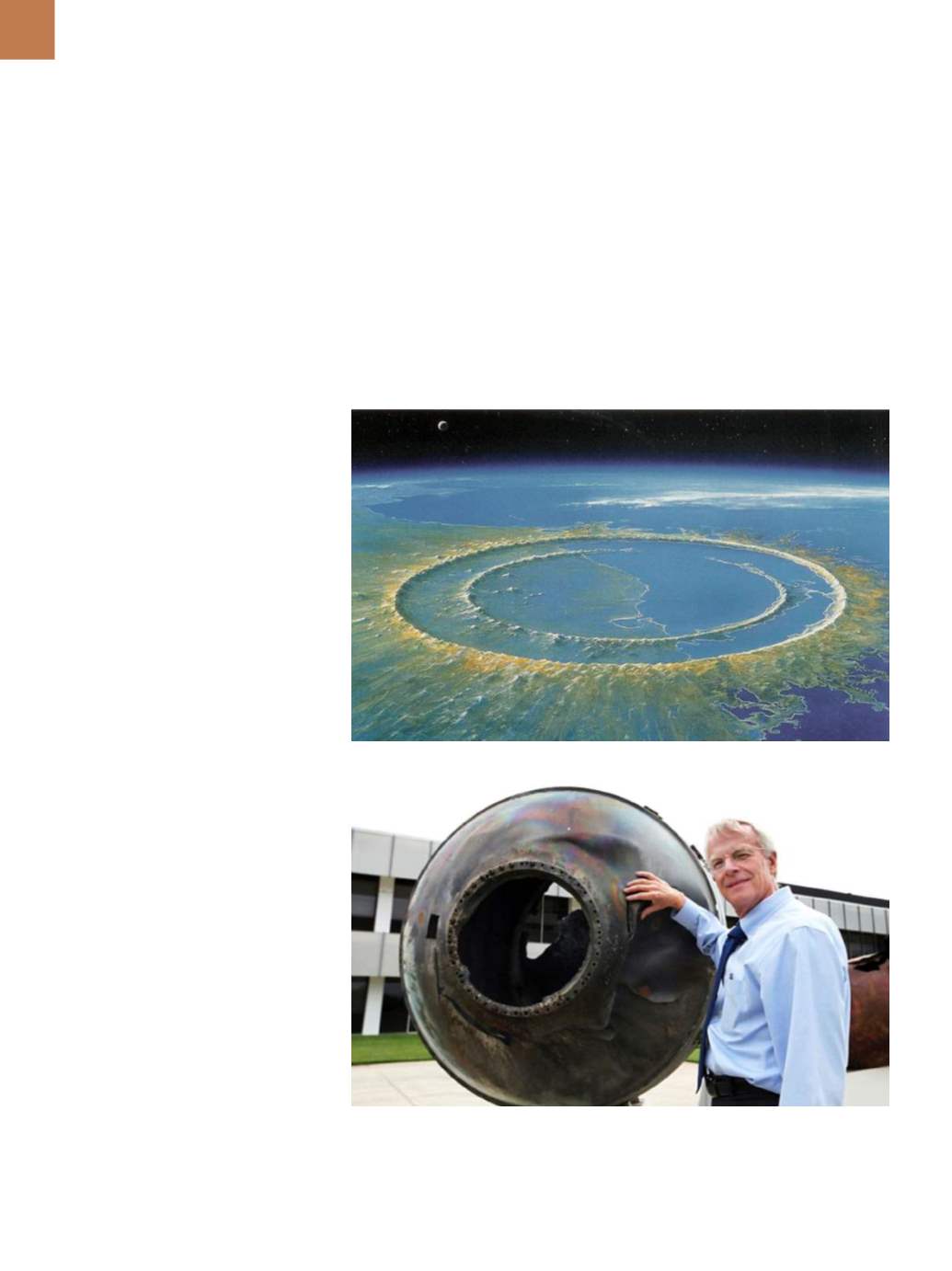

A D V A N C E D M A T E R I A L S & P R O C E S S E S | M A Y 2 0 1 6
2 8
DESIGNING SPACE MATERIALS
TO WITHSTAND COSMIC DUST
Materials used to construct spacecraft and protective gear
—
including the
International Space Station and space suits for astronauts
—
must be lightweight
yet strong enough to guard against cosmic dust that travels at hypervelocity.
Graham Rideal, Whitehouse Scientific Ltd., Waverton, UK
H
ypervelocity is defined as speeds
in excess of 2-3 km/sec (7000
mph). While such speeds do not
occur naturally on Earth, they are com-
mon in space. Hypervelocity impact
between objects can generate pres-
sures of up to 1 TPa (150million psi) and
temperatures high enough to vaporize
the colliding bodies.
While collisions of large objects are
comparatively rare, notable exceptions
include craters on the surface of the
moon and the giant asteroid believed to
have killed off the dinosaurs. The 150-km
crater on the Yucatan Peninsula in Mex-
ico (Fig. 1) is widely assumed to have
been caused by a 100-km-wide asteroid
travelling at 30 km/sec (70,000 mph).
Smaller meteors have also been known
to knock out satellites (Fig. 2).
The most frequent collisions in
space, however, occur from cosmic
dust whose size varies from roughly
1 mm to below 1
μ
m. Evidence of these
collisions was first seen on spacecraft
returning to Earth whose surfaces were
peppered with microindentations.
CAPTURE AND ANALYSIS
Several methods of collecting cos-
mic dust for analysis exist, but one tech-
nique, which also allows their speed
to be calculated, uses aerogel foam
(Fig. 3). This ultra-lightweight ceramic
foam is approximately 1000 times lighter
than glass. When the specialized foam
is mounted outside spacecraft, cosmic
dust penetrates its structure. It can then
be subsequently recoveredandanalyzed
Fig. 1 —
Simulation of an asteroid impact in Mexico. Courtesy of National Geographic.
Fig. 2 —
Meteor damage to a satellite. Courtesy of University of Kent.
and its penetration depth recorded
(Fig. 4). Individual particles are collected
andmicroscopically measured, enabling
accurate density calculations.


















